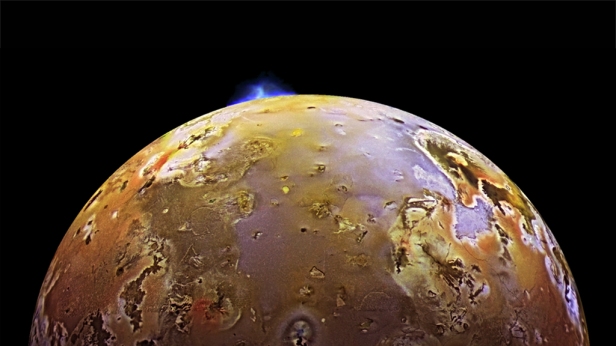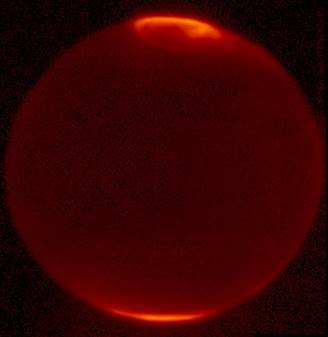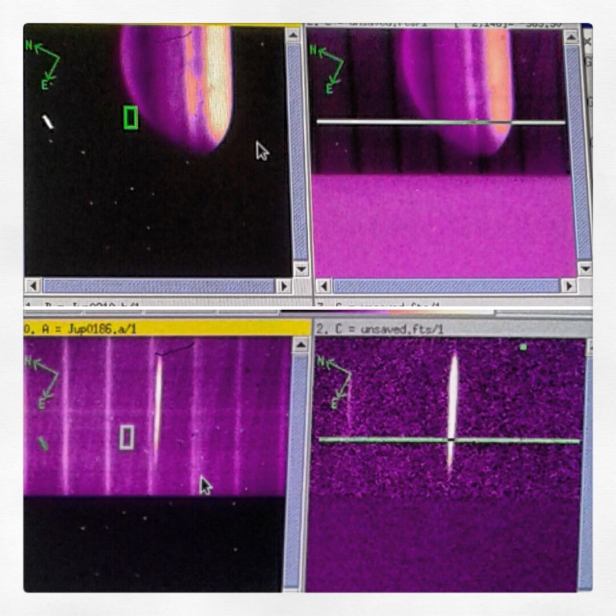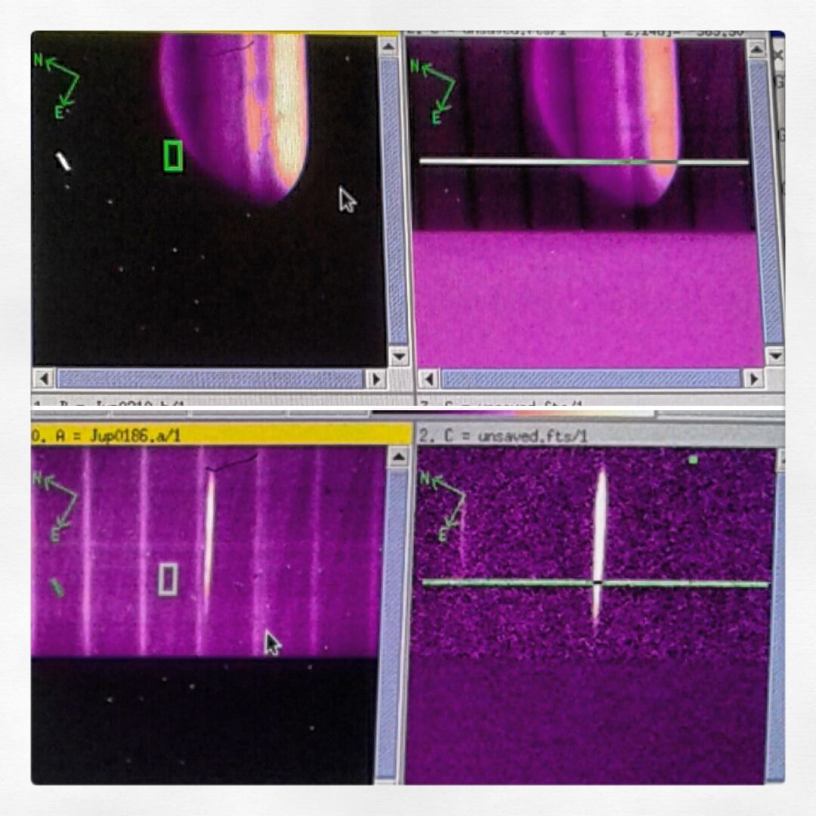There’s always some who want to know more after you’ve done your standard “this is what my research is about” spiel. This is a blog for those who just keep asking questions! 🙂
So the title of my thesis is: infrared observations of gas giant aurora. However so far I have been mainly studying Jupiter’s Northern lights, so we may need to get inventing a new title!
The best part of studying other planets is the similarities and differences to Earth. Like on Earth, the aurora on Jupiter is created by energetic particles flowing down magnetic field lines and exciting other particles into emitting light. But unlike at Earth, the generation of Jupiter’s aurora has a different beginning.
Let’s start off at the sun. The Sun is hot and dense and space being less so allows particles to constantly flow away from the sun, and with it comes the Sun’s magnetic field. The particles and magnetic field together are known as the solar wind. The Earth’s aurora is generated through the Earth’s magnetic field interacting with the solar wind. But it doesn’t work that way at Jupiter. Jupiter’s aurora is generated through some substantial internal rejigging and it is highly controversial whether the solar wind even gets a look in!
Jupiter’s magnetic field is super strong, about ten times to strength of the Earth’s magnetic field. If it were possible to view the invisible field lines that surround Jupiter, they would fill an area in the night sky which was larger than the moon! And because Jupiter’s mangetic field is so strong, the aurora is generated in a different way.

Imagine you’ve made a line of people and asked them all to hold hands and you stand on the spot and spin them around you. Maybe you’re mean and try to spin them really fast and you’ll notice that the person on the end of the chain has to run the fastest to keep up. At some point they can’t run fast enough and they have to break the chain to run slower that the rest. This is essentially what happens at Jupiter to create the aurora, but instead of people there is plasma, and instead of holding hands there are magnetic fields.

The Galilean moon, Io, has sulphurous volcanoes which eject one tonne of material per second, which are quickly turned into charged particles and join the rest of the population of plasma that surrounds Jupiter. In space plasma physics charged particles and magnetic field lines are intertwined. So as the plasma spins around Jupiter, just like how you were spinning those people around, the magnetic field lines, everyone’s arms, get dragged with it all. All this stuff is spinning around Jupiter, moving faster and faster as we move away from Jupiter until it cannot go any faster, causing the plasma and the magnetic field lines to slow down, just like that person who was stuck on the end that couldn’t keep up. The consequence of having charged particles moving at different speeds relative to each other is that they make electrical currents. The electrical currents send electrons down the magnetic field lines and they accelerate into the polar regions, smashing into Jupiter’s atmosphere and creating the aurora.
To study Jupiter’s aurora I use the NASA Infrared Telescope Facility (IRTF) at Mauna Kea, Hawai’i. This is where the PhD comes into its own and things begin to get super niche!
We observe Jupiter at a specific wavelength in the infrared which is a very considerately not absorbed by the Earth’s atmosphere. A particular charged molecule (ion) in Jupiter’s upper atmosphere and aurora, known as H3+, emits infrared light at the specific wavelength which we study. Using an instrument at IRTF called CSHELL, the light from Jupiter is split up so we can view H3+ spectral emission lines, which I fondly refer to as my shiny lines. We can move the telescope around so that it can collect lots of shiny lines which we can piece together, like a mosaic, to make an image of Jupiter.

Now this does sound like an overly complicated way to take a picture, however the best thing about the shiny lines is that we can calculate the velocities of the H3+ ions that are creating them. We do this using the Doppler shift of the line. Doppler shift is that change in pitch that you hear as an ambulance zooms past you. We use the same principal to infer the velocities of the H3+ ions.

Knowing the velocity of the ions is important because it can magically tell us what the magnetic field of Jupiter is doing. Like I said before, charged particles or molecules, like H3+, are closely bound with the magnetic fields. So by studying the aurora of Jupiter you can reveal the secrets of its magnetic field! And this is ultimately what I hope to do!
The particular secret of the magnetic field of Jupiter, which I think is most exciting, is how it interacts with the solar wind. It’s quite a controversial topic, with some people believing Jupiter does its own thing and is not affected by the sun, and others believing the solar wind causes changes in Jupiter’s aurora. I’m hoping the data that I’m currently collecting here in Hawai’i is going to help us understand what going on at Jupiter!

Ah, now I understand 🙂
LikeLike